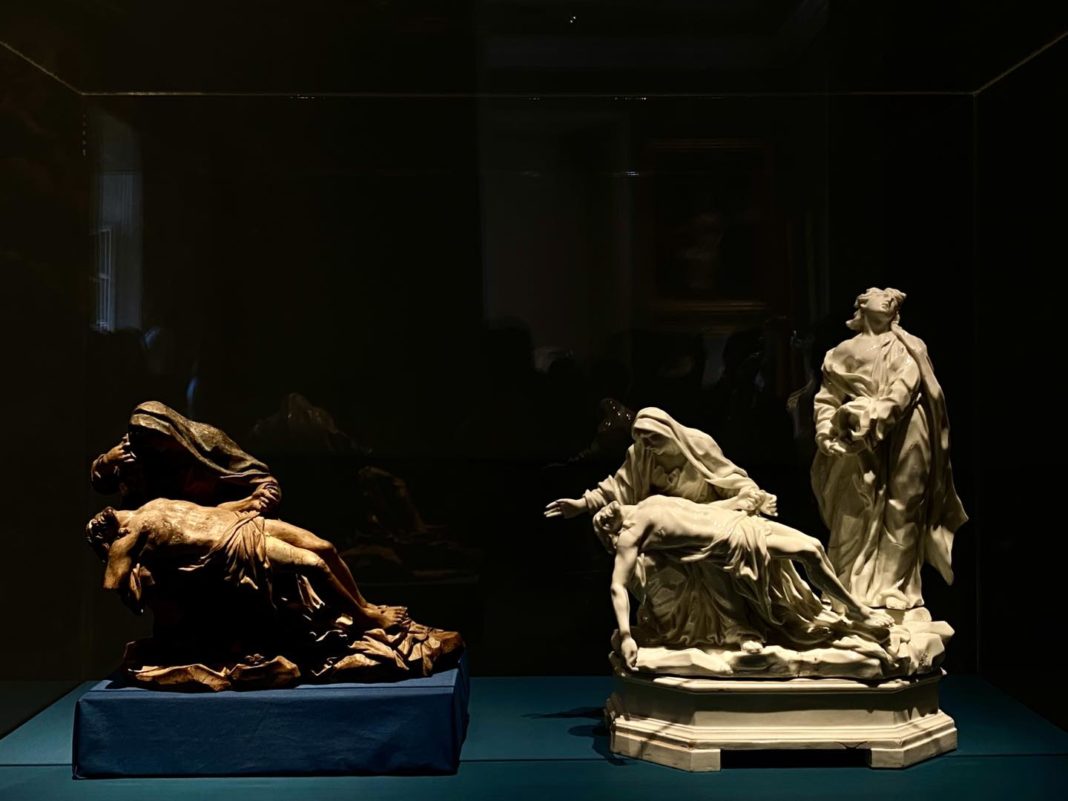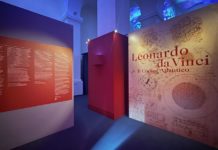Torna a Napoli la Pietà di Gricci, modellatore del re. Un tassello importante per completare la storia della Real Fabbrica di Porcellana di Capodimonte, fondata da Carlo di Borbone nel 1743: un piccolo ma straordinario capolavoro pezzo rarissimo in terracotta che gli studiosi hanno identificato circa un ventennio fa sul mercato internazionale dell’arte.
“La Pietà di Gricci, il modellatore del Re. Nuova acquisizione di Capodimonte. Tra terracotta e porcellana” è il titolo dell’allestimento accessibile al pubblico fino al 28 ottobre nella sala 20 del secondo piano dove è esposta la celebre Pietà di Annibale Carracci: il dipinto, realizzato presumibilmente per la devozione privata del cardinale Odoardo, nel Settecento al Palazzo Reale a Napoli, è caratterizzato da un dolore straziato e raccolto.
Un’emozione, ammirare da vicino la scultura, come spiega il direttore Eike Schmidt: «Nelle collezioni pubbliche cittadine non è conservato alcun bozzetto in terracotta ascrivibile, come questo, alla mano del celebre capo-modellatore della Real Fabbrica. Il modello in creta plasmato da Gricci è, infatti, lo stadio dell’opera in cui più immediatamente è possibile cogliere il segno e la cultura figurativa di questo grande artista fiorentino, che Carlo di Borbone volle con sé, prima a Napoli e poi a Madrid. Abbiamo voluto condividere subito questa acquisizione con i tanti visitatori che nel periodo estivo affollano il Museo e Real Bosco. Con un piccolo allestimento che vuole essere una preziosa anticipazione della nuova sezione delle porcellane, attesa tra pochi mesi».
Adesso la nuova terracotta del Museo e Real Bosco, infatti, è svelata insieme alla Pietà San Giovanni Evangelista in porcellana del Museo Duca di Martina, sempre di Giuseppe Gricci. La costruzione piramidale è quella della Pietà di Michelangelo, con il corpo di Cristo accolto sulle gambe di Maria e le figure raccordate da un ampio panneggio. Il confronto rivela l’evoluzione stilistica di Gricci sul tema della Pietà: più teatrale e distaccata nella porcellana, dove il dolore è sublimato, più umana e intima nella terracotta.
Capodimonte Museum/ Giuseppe Gricci’s terracotta Pietà returns to Naples: the public will be able to admire it together with another of his works in porcelain (until 28th October)
The Pietà by Gricci is back in Naples. This important piece completes the history of the Royal Porcelain Factory of Capodimonte, founded by Charles of Bourbon in 1743. It is a small but extraordinary terracotta masterpiece that was discovered by scholars on the international art market about twenty years ago.
“The Pietà by Gricci, the king’s modeller. New acquisition by Capodimonte. Between Terracotta and Porcelain”, an exhibition open to the public until the 28th October. It is on display in Room 20 on the second floor, where Annibale Carracci’s famous Pietà is also exhibited. Presumably created for Cardinal Odoardo’s private devotion in the 18th century at the Royal Palace in Naples, the painting is characterised by heart-rending and contemplative sorrow.
As director Eike Schmidt explains, it is exciting to admire the sculpture up close: “There are no terracotta sketches in the city’s public collections that can be attributed to the famous chief modeller of the Royal Factory like this one can.” This clay model, sculpted by Gricci, is the stage at which the mark and figurative style of this great Florentine artist is most immediately apparent. Charles of Bourbon wanted him with him first in Naples and then in Madrid. We wanted to share this acquisition with the many visitors who flock to the museum and royal forest during the summer. This small exhibition is intended to offer a sneak preview of the new porcelain section, which is expected in a few months.
The new terracotta piece is now unveiled in the Museum and Royal Forest, together with the porcelain Pietà which includes San Giovanni Evangelista, a work also by Giuseppe Gricci that belongs to the Duca di Martina Museum. The pyramidal construction is based on Michelangelo’s Pietà, with Christ’s body resting on Mary’s legs and the figures connected by a large drapery. This comparison reveals Gricci’s stylistic evolution in his Pietà pieces: the porcelain work is more theatrical and detached, while the terracotta piece is more human and intimate.










